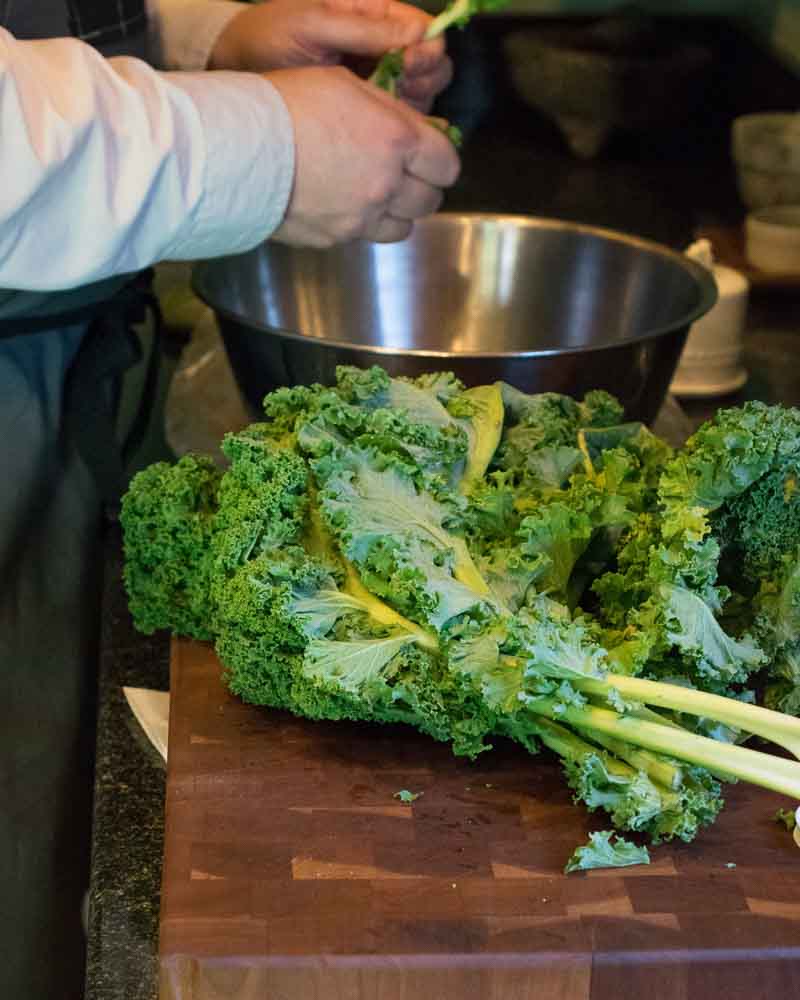6 Ways to Help Your Winter Kale Survive and Thrive
We call it "winter kale" because kale is happiest in the colder weather of fall, winter and early spring. We love to grow (and eat) winter kale. It extends our tiny garden into cold weather. Here’s how to keep winter kale as a reliable urban garden crop all winter long.
Winter kale starts in fall
Like all plants, kale really slows down its growth in winter. You must give it a head start if you want it to winter over. This part can be tricky. Even winter kale needs some warmth to get started, but it doesn't like too much heat. Plant it while the weather is still warm enough to sprout the seeds, but cool enough for kale to be happy. For us in Virginia this is early to mid October.
But our summer plants like tomatoes and peppers are still producing like mad into the late fall. We don't want to rip those up too soon. To get winter kale started you have a few options:
Sprinkle kale seeds in and around existing plants. As the kale starts to sprout you can thin them out. Use the seedlings in salads or on sandwiches. When tomatoes or peppers are done producing, cut the stems at the roots. Pulling them out by the roots would disturb the baby kale. Voila - kale is perfectly spaced and ready to take off.
Plant kale in a cold frame to winter over. By late fall the cold frame is probably empty, since it is best used in cold weather. Plant the seeds directly in the cold frame. You can either transplant them in spring or just leave them there until they start to bolt.
Leave an open space from an early summer crop, like cucumbers. Plan ahead to place those early crops in a sunny space that will work well for winter. Just let the space sit empty for a few weeks (pro tip: grow a quick cover crop like red clover to replenish the soil's nitrogen while you wait). Once the weather cools off, plant the kale.
Warm and cozy winter blanket options
You could just leave winter kale out there and let it fend for itself. It's pretty hardy, especially in warmer climates. But we like to give ours a little added protection because we end up getting more kale. There are a few cozy options for this:
* Mulch the kale with crunched-up leaves. This blankets the leaves, and adds nutrition as the leaves break down. Snow cover will add some extra insulation.
Use row cover. Just unroll a layer of lightweight fabric row cover directly on the plants. Hold down the edges with bricks or row cover staples.
Build a hoop house of either fabric row cover or clear plastic.
Plant kale in a cold frame with a glass or clear plastic lid. Lift the lid to water and cool off the plants on warm days.
Eating fresh kale all winter long
Wait for a day when the temperature rises above freezing to harvest kale. Otherwise the plant's watery cells are frozen and the leaves will wilt. They need to warm up to recover. You can either pull off some leaves here and there during the winter, or wait until the plants get a little growth spurt in spring.
Chef Iggy cooks either kale or collards about once a week, and has some tasty go-to recipes like this Southern Braised Kale with Onions. Sometime we only have a small harvest, or a leaf here and there. We cut it it into julienne and add to a potato hash or a flavorful bean soup. Trim the leaves and keep them fresh for a week or two in the refrigerator in a plastic bag with a damp paper towel. Enjoy this fresh treat from the winter garden!
